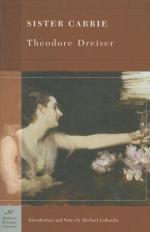|
This section contains 337 words (approx. 1 page at 400 words per page) |

|
Late 1800s: Women's fashions favor Victorian styles. Dress indicates a woman's status. Upper-and middle-class women wear constrictive underclothing (corsets), high-heeled shoes, and elaborate, vividly colored dresses made of luxurious fabrics.
Early 1900s: As women become more involved in leisure activities, such as sports, and take on new roles in society, such as office workers and students, their fashions evolve to freer, less structured styles. The styles include loose bloomers instead of corsets, less bulky skirts, and shirtwaist blouses. Shoes are flatter and more feminine.
Late 1900s: Women become more health conscious and involved in professional careers; they begin to define their own unique styles of fashion. Clothing varies from jeans to pants to short and full-length skirts. Form-fitting clothes that show off a woman's figure are popular.
Late 1800s: The arts become a popular form of entertainment. Drama, musical comedy, and vaudeville acts proliferate...
|
This section contains 337 words (approx. 1 page at 400 words per page) |

|




